January 5, 2020: Happy New Year!! Things to look for in the Blog this week:
1. Translating Church Handbook 2 into Swahili
2. Fact Sheet. U.S Refugee Resettlement
3. Conversion Story of Amos Baruani - our Swahili Group Leader
4. Sister Oleson & Sister Graham are in our District.
5. We're not in Kansas, Dorothy!
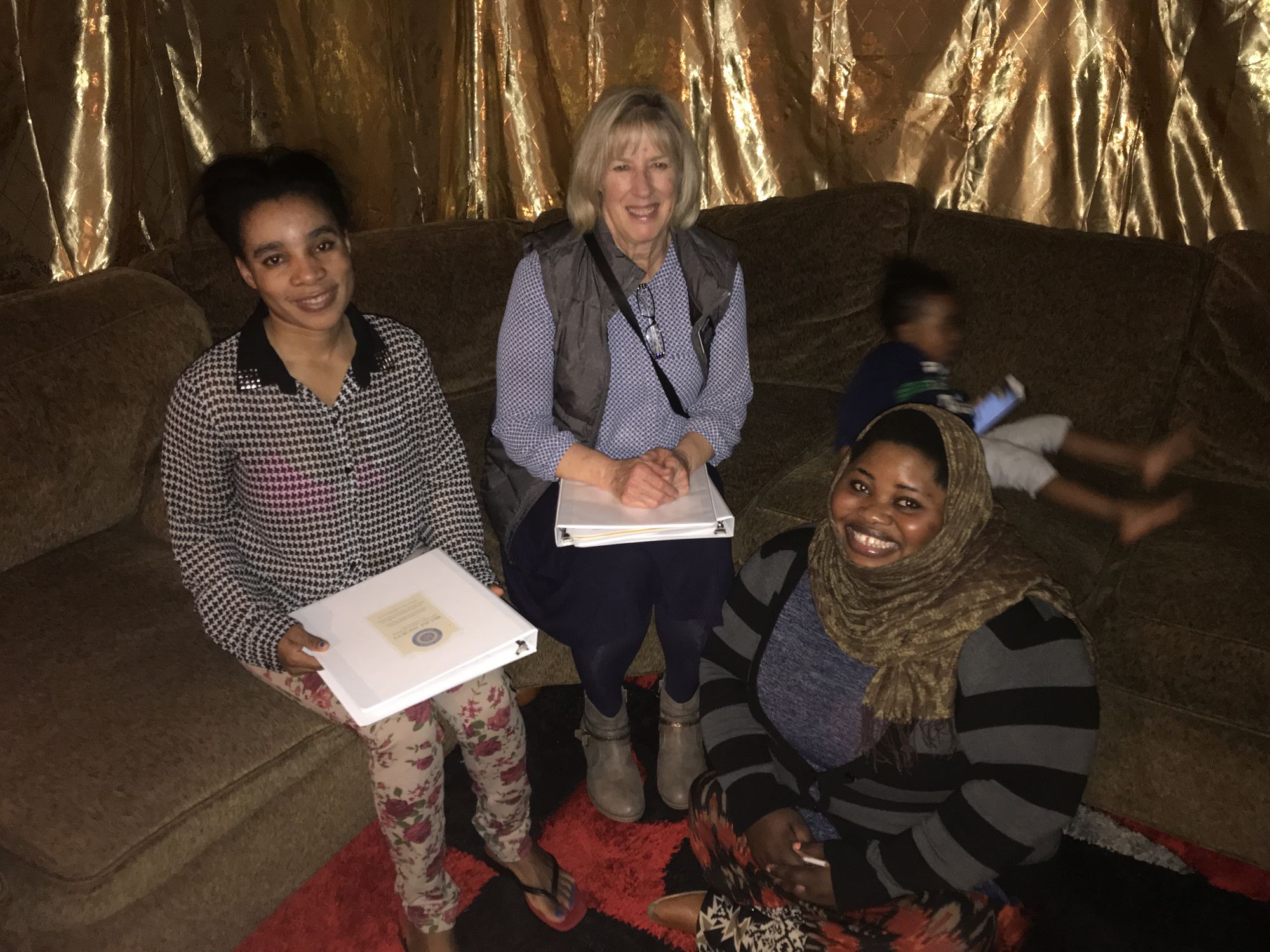
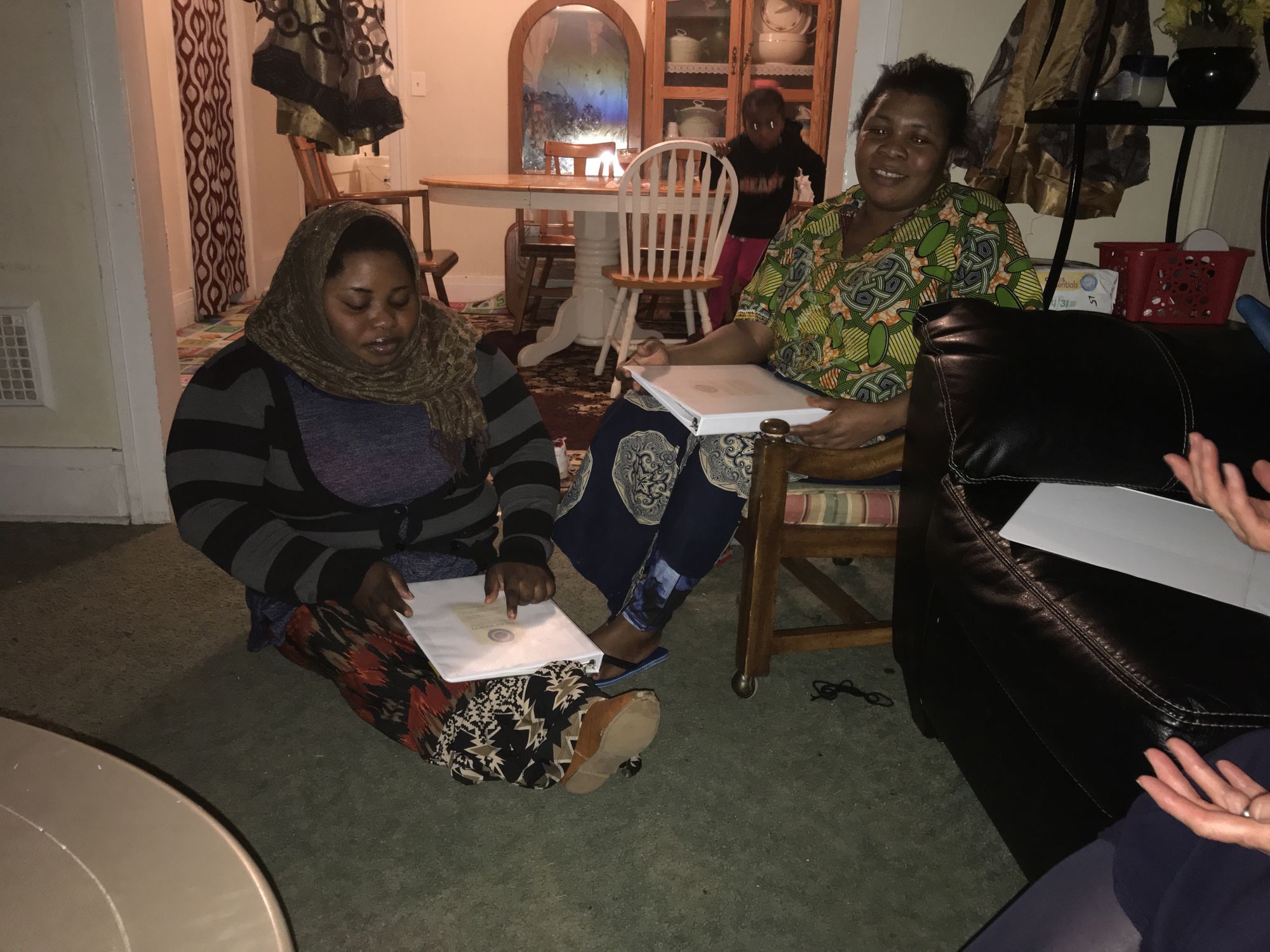
Fact Sheet: U.S. Refugee Resettlement
January 25, 2019
Who is a refugee?
A person outside the U.S. seeking refuge. The U.S., based on international law, defines “refugee” as a person outside the country of his or her nationality, who is unable or unwilling to return to that country because of persecution or a well-founded fear of persecution based on his or her race, religion, nationality, membership in a particular social group, or political opinion.
The legal basis for humanitarian admissions of refugees and asylum seekers to the United States began with the Refugee Act of 1980, which defined a refugee, established the Reception and Placement (R&P) program for initial resettlement under the U.S. Department of State, and created the Office of Refugee Resettlement (ORR) under the Department of Health and Human Services (HHS).
Who determines the number of refugee admissions?
The President of the United States. The number of refugees accepted to the United States each year is set by the President in consultation with Congress.
What is the refugee limit for fiscal year 2019?
30,000. Although historically the U.S. has resettled more refugees than any other country, its resettlement program has not kept up with increase of the global refugee population that has increased by about 50 percent over the past five years.
While there were approximately 19.9 million refugees worldwide as of fiscal year (FY) 2017, the U.S. currently resettles just a small fraction of them. Less than 1 percent of the total number of displaced people on the world has been resettled to one of 37 current resettlement countries each year. In FY 2016, the U.S. admitted nearly 85,000 refugees, a number that declined to fewer than 54,000 refugees in FY 2017, the lowest number in a decade after President Trump reduced the cap on refugee admissions via executive order. In FY 2018, the president further reduced the refugee admission cap to 45,000, the lowest since the enactment of the Refugee Act of 1980. For 2019, the administration cut the number of admissions even more to 30,000. However, the cap represents the maximum number of refugees that may be resettled in a year and the Trump administration is unlikely to resettle anywhere close to 30,000 people in FY 2019. In FY2018, the administration failed to keep pace with the 3,750 refugees who would need to be resettled each month to reach the annual ceiling, resettling a total of less than a half of the annual admission number
[The government cut the cap on refugee admissions to 18,000 for 2020 - we're headed in the wrong direction.]
Where do refugees resettling in the U.S. come from?
All around the world. The United States admits refugees from more than 60 countries all around the globe. In FY 2018, U.S. refugees came mainly from Democratic Republic of Congo, Burma, Ukraine and Bhutan.
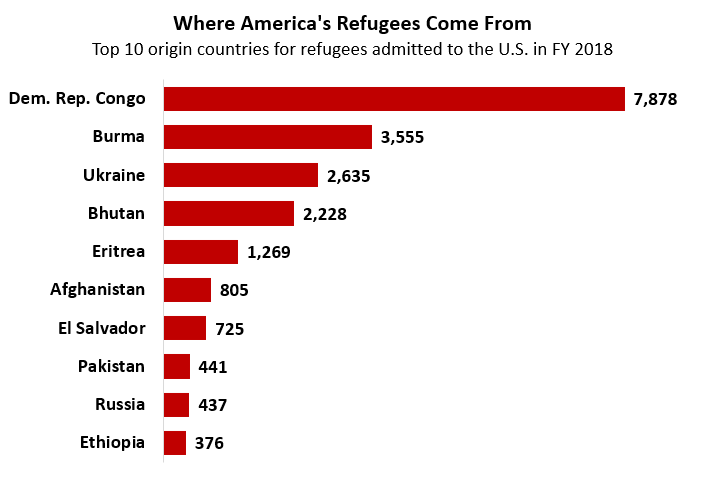
Source: Refugee Processing Center
The number of U.S. refugees from Syria and Iran dropped considerably in FY18 due to implementation of the latest version of the Trump administration’s travel ban, which prevents individuals from Iran, Libya, North Korea, Somalia, Sudan, Syria, Yemen and certain government officials from Venezuela from entering the U.S. Because the travel ban has been in effect since June 2018 after being blocked by courts for nine months, the two countries are no longer among the top 10 countries of origin for U.S. refugees.
Where do refugees resettle?
All across the United States. Refugees have been resettled in 49 U.S. states, with Texas, Washington and Ohio resettling the most refugees in FY 2018.
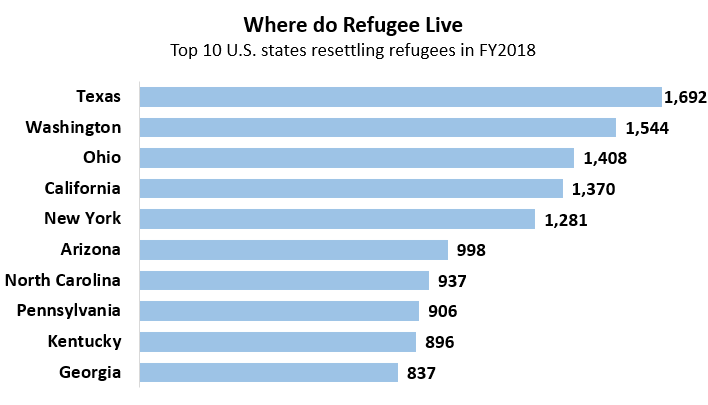
Source: Refugee Processing Center
The number of U.S. refugees from Syria and Iran dropped considerably in FY18 due to implementation of the latest version of the Trump administration’s travel ban, which prevents individuals from Iran, Libya, North Korea, Somalia, Sudan, Syria, Yemen and certain government officials from Venezuela from entering the U.S. Because the travel ban has been in effect since June 2018 after being blocked by courts for nine months, the two countries are no longer among the top 10 countries of origin for U.S. refugees.
Where do refugees resettle?
All across the United States. Refugees have been resettled in 49 U.S. states, with Texas, Washington and Ohio resettling the most refugees in FY 2018.
Source: Refugee Processing Center
Who refers refugees to the U.S. for resettlement?
Primarily the United Nations High Commissioner for Refugees (UNHCR). UNHCR, the United Nations (UN) Refugee Agency, is an international agency dedicated to protecting forcibly displaced communities and stateless people. UNHCR screens applicants to determine whether they qualify as refugees and if they are in particular need of resettlement, and, if so, refers them to the U.S. and other countries. In some cases, for the U.S. refugee admissions program (USRAP), refugees are referred by a U.S. Embassy or a specially-trained nongovernmental organization; certain groups with family members in the U.S. or who served U.S. missions in Iraq also have application pathways.
How long does it take to screen and vet a refugee?
An average of nearly two years. While the total processing time varies depending on an applicant’s location as well as other circumstances and policy changes, the vetting time – from the refugee’s initial UNHCR referral to his or her arrival in the U.S. –has averaged approximately 18 to 24 months in recent years. Given recent developments, the length of the wait will likely increase.
To be admitted to the U.S., refugees go through several rounds of background checks, screenings and interviews under the United States Refugee Admissions Program (USRAP), including:
After an initial screening by UNHCR, the nine Resettlement Support Centers (RSCs) located around the world collect applicants’ biographic and other information.
After the State Department preliminarily approves an application to begin the resettlement process, they are reviewed by officers from U.S. Citizenship and Immigration Services (USCIS) in the Department of Homeland Security (DHS), as well as ongoing vetting by a variety of intelligence agencies (including the FBI, CIA, and others).
USCIS also conducts an in-person interview with each refugee applicant before deciding whether to approve him or her for resettlement in the U.S.
All USCIS-approved refugees then undergo health screening to prevent those with contagious diseases from entering the U.S.
Most refugees undergo also a cultural orientation course prior their arrival.
Before refugees arrive, it is established where in the United States they will initially live and which refugee resettlement agency will help orient them to life in the United States.
After arrival to the U.S., all refugees are checkedat the airport by a U.S. Customs and Border Protection (CBP) officer to ensure they are the same people that were screened and approved for admission.
What do refugee resettlement agencies do?
Assist refugees after their arrival in the U.S. After the final screenings by the U.S. government, the refugees are picked up at the airport by a representative of one of the nine domestic resettlement agencies, all of which have cooperative agreements with the U.S. Department of State.
Shortly before the arrival of the refugees, the resettlement agencies arrange for their housing, which include basic furnishings, appliances, climate-appropriate clothing, and some of the food typical of the refugees’ culture. When the refugees arrive, the resettlement agencies’ representatives then take refugees to their new homes.
After arrival, the resettlement agencies help refugees to start their lives in the U.S., assisting them with applying for a Social Security card, registering children in school, learning how to access shopping facilities, arranging medical appointments, and connecting them with needed social or language services.
How is the refugee resettlement funded?
Through the Department of State and the Department of Health and Human Services. The State Department’s Reception and Placement (R&P) program provides refugees with a loan to travel to the U.S., which they are required to start repaying after they arrive. The R&P program then supplies resettlement agencies a one-time sum per refugee to finance their first 30-90 days in the U.S. That money goes mostly towards rent, furnishings, food, and clothing, as well as costs of the agency staff case management and other integration services.
After three months, HHS’s Office of Refugee Resettlement (ORR) then works through the states and other nongovernmental organizations to provide refugees with limited cash and medical assistance, as well as short-term language, employment, and social services, and longer term integration services.
Can refugees legally work in the United States?
Yes. Upon arrival in the U.S., refugees receive employment authorization and are encouraged to become employed as soon as possible so that they can support themselves.
Can a refugee become a U.S. citizen?
Yes. All refugees are required to apply for a green card to become a permanent resident after one year in the United States. After five years of residency, they become eligible to apply for U.S. citizenship.
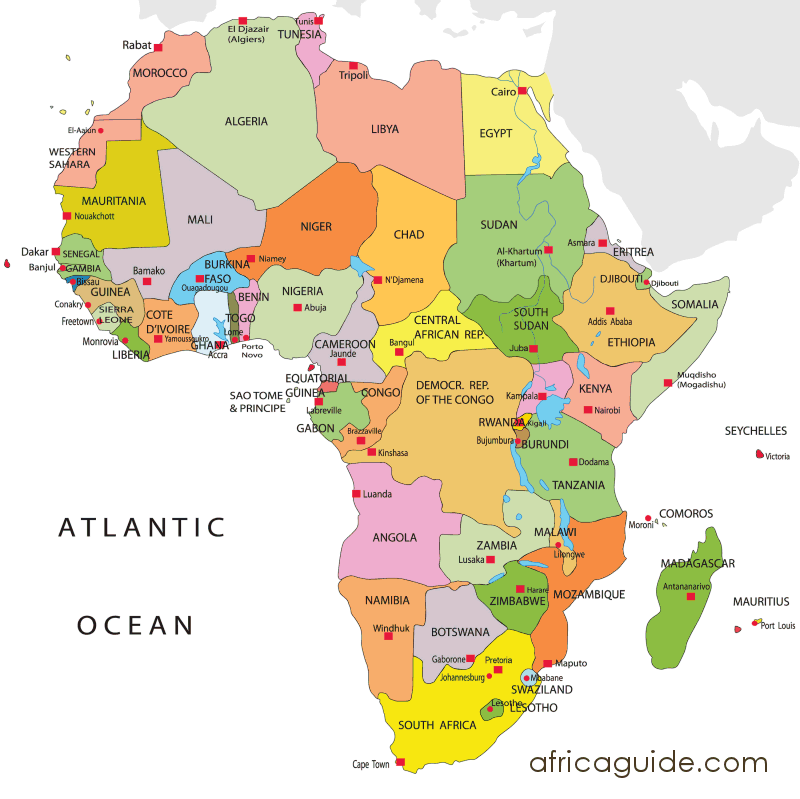
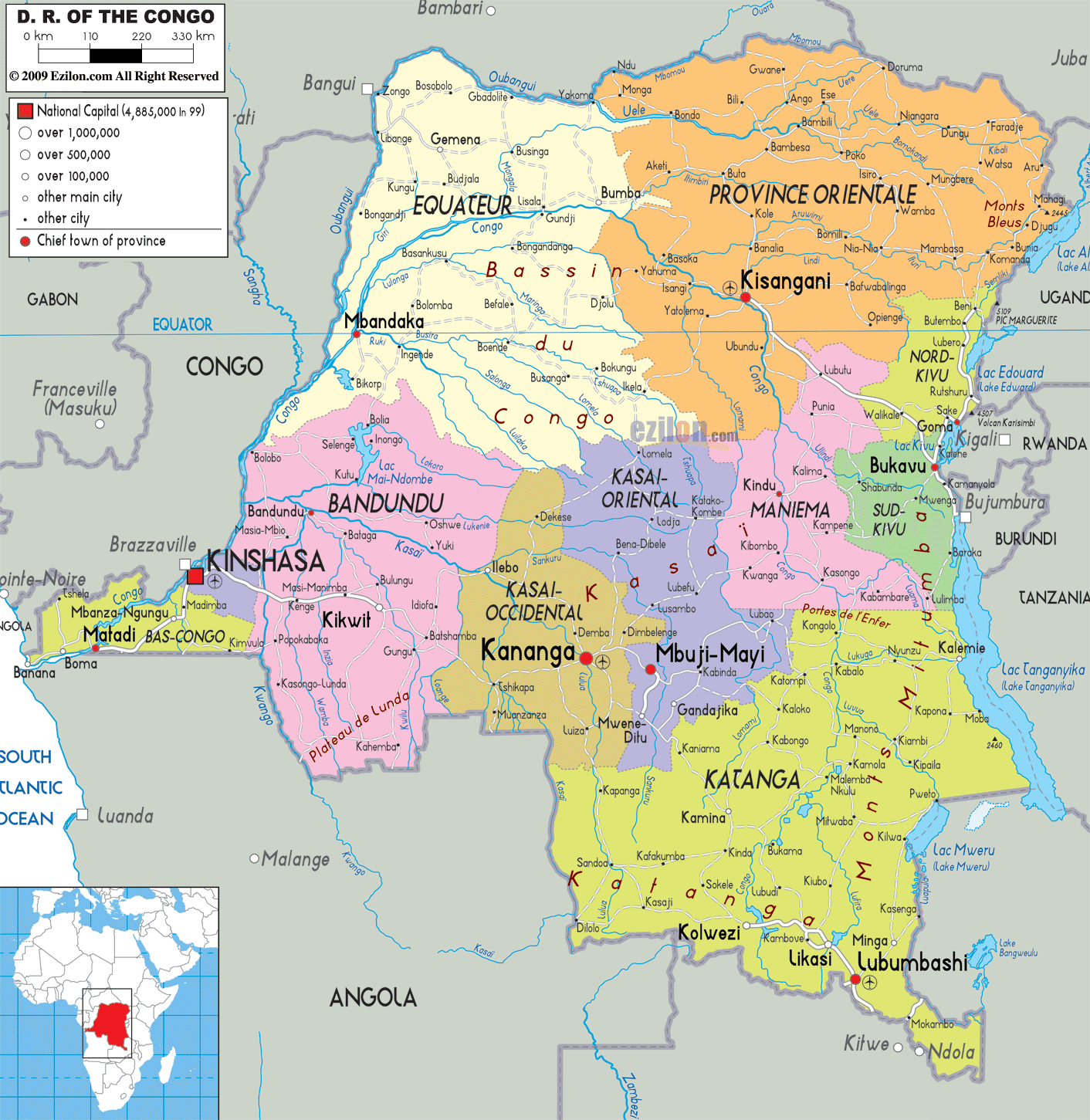
Amos Baruani Conversion Story as told to Don Sonnefeld & Taylor Atkinson:
My name is Amos Makulu Baruani, and I was born a refugee from the DRC in Burundi in 1981. My mother, Ungwa Bawili Njasa, and my father, Henry Baruani, had fled from war in the DRC and for the first months of my life I lived with my 2 brothers and 4 sisters. Shortly afterwards, my family returned to the Congo.
As I grew up, I learned to love the Congo, my country and my people. It was there that I went to elementary school and high school, sat by the jungle and ate rice and beans that my mother prepared. There were dangers -- once my father brought home a 14-foot boa constrictor he had killed in the jungle -- but it was my home. Sadly, at age 15, war erupted in the Congo again and I was forced to flee with my mother.
We left our home in Tizi and I rowed our canoe for 22 hours to reach Kigoma in Tanzania to seek refuge. There, we found shelter in Lugufu where a refugee camp had been established for Congolese people. Life in the refugee camp was extremely difficult, sometimes with very little food and sometimes with no food at all. Still, I worked as a carpenter for some additional food or supplies and made close friends. Also, it was in Lugufu in 2004 that my brothers encouraged me to talk to the neighbor that I was too shy to talk to on my own, Fatuma. Fatuma and I were married later that year, and I worked off a $500 dowry to her parents over the years that came after.
Two years later, a Congolese man, Mchumbi, had come to the camp from Nairobi, where he had been given a book. He had passed it on to a friend of mine, Ikuku, and one day as my friend Dennis and I went to visit Ikuku in his home we noticed he was reading it. We asked him about the book, and he gave it to me. I learned that it was called The Book of Mormon. This began the long journey of finding the truth of the gospel, and I have kept that same book to this day.
As I began to read the book, I was impressed by the introduction where it talks about Moroni's promise, to read and pray to learn if the book was true. Studying the book quickly became a passion and love of mine, and as I compared it to other spiritual texts like the Bible and others, I became convinced of its goodness and truth. I knew it was true.
Excited by this, Dennis and I began to share what we'd learned with others. We formed a small group that would meet on Sundays to discuss gospel teachings. We sent letters to the Church in France and asked them to send us missionaries. The church sent us pamphlets about the restoration of the gospel and 4 more copies of the Book of Mormon, which we studied and discussed together. They sent us the address of the church in Nairobi, and we began to send letters back and forth with them as well. We continued to ask for missionaries, and they continued to send us church literature. Eventually they gave us the address of the church in Dar es Salaam in Tanzania, the closest church location to our refugee camp, 1,200 km away.
After four years of not having any missionaries sent, three of us, myself, Dennis, and our friend Benjamin, decided to go to Dar es Salaam ourselves. The journey took us 4 days, some of which we were able to afford to travel by bus, but much of it was on foot. The journey was long, but we were excited and ready to be baptized.
In December of 2008 we found the missionaries, but we learned that the mission president was not in the country. We spent three days with the missionaries, they taught us the gospel and gave us more materials. However, the missionaries told us that without their mission president's approval, they were not authorized to baptize us. It was a moment of extreme emotions -- we were very disappointed that after our travels, we could not be baptized as we had hoped, but we were excited that we had a chance to learn from the missionaries and bring these teachings back to our people. The missionaries shared our sadness and joy as they watched us return to Lugufu.
We continued to meet. On Sundays we would gather. The missionaries had told us we couldn't bless or administer the sacrament without the priesthood, but we studied and taught from the Principles of the Gospel handbook. During the week, we would do home teaching and missionary visits as the missionaries had taught us to do. Then, in 2009, the Tanzanian government decided to shut down the Lugufu refugee camp. They told the Congolese refugees to return home, and while some did, many of us did not believe the country was safe enough for us to bring our families back there yet.
We moved to a new refugee camp in Tanzania, Njaragusu, and continued our meetings. We would send reports of our numbers and progress to the mission president in Nairobi, whose mission our refugee camp was technically a part of. Eventually missionaries who had heard about us began to visit us from Dar es Salaam. On one occasion, an Elder Canyon came and taught us, bringing with him three bus tickets to Dar es Salaam. With his gift, I was able to travel to Dar es Salaam once more with my friends as I had two years before and be baptized. I was overjoyed to finally join the Church of Jesus Christ.
After returning to Njarugusu, missionaries began to visit us more regularly, like Elder Johnny Cannet and the first counselor of the mission presidency, Elder Badilemua.
During this time I applied to the immigration bureau of the United States, and returned to Kigoma to meet with them. My family and I were tremendously blessed with the opportunity to come to America and we now live in Buffalo. My in-laws have told me that since I live in the United States now, the dowry for my wife has now gone up to $1,500.
Since I have arrived, a small group of French and Swahili speaking Africans has begun to hold their own sacrament meetings in the Buffalo ward's building. My friend Dennis has also come to America and belongs to a ward in Idaho. I am still in contact with my Congolese brothers and sisters in Njagurusu -- recently the president of the Nairobi mission visited them and baptized 27 people. And weekly I go with the missionaries in Buffalo to meet with other Congolese brothers and sisters who have taken refuge in Buffalo.
I have been extremely blessed, and now that my wife and children are baptized, we are finally taking temple prep lessons so that we can go this fall to the temple and be sealed together as a family for eternity. I know that the church is true, that Joseph Smith was a prophet, that the Book of Mormon is the word of God, and that Jesus Christ is my Savior.
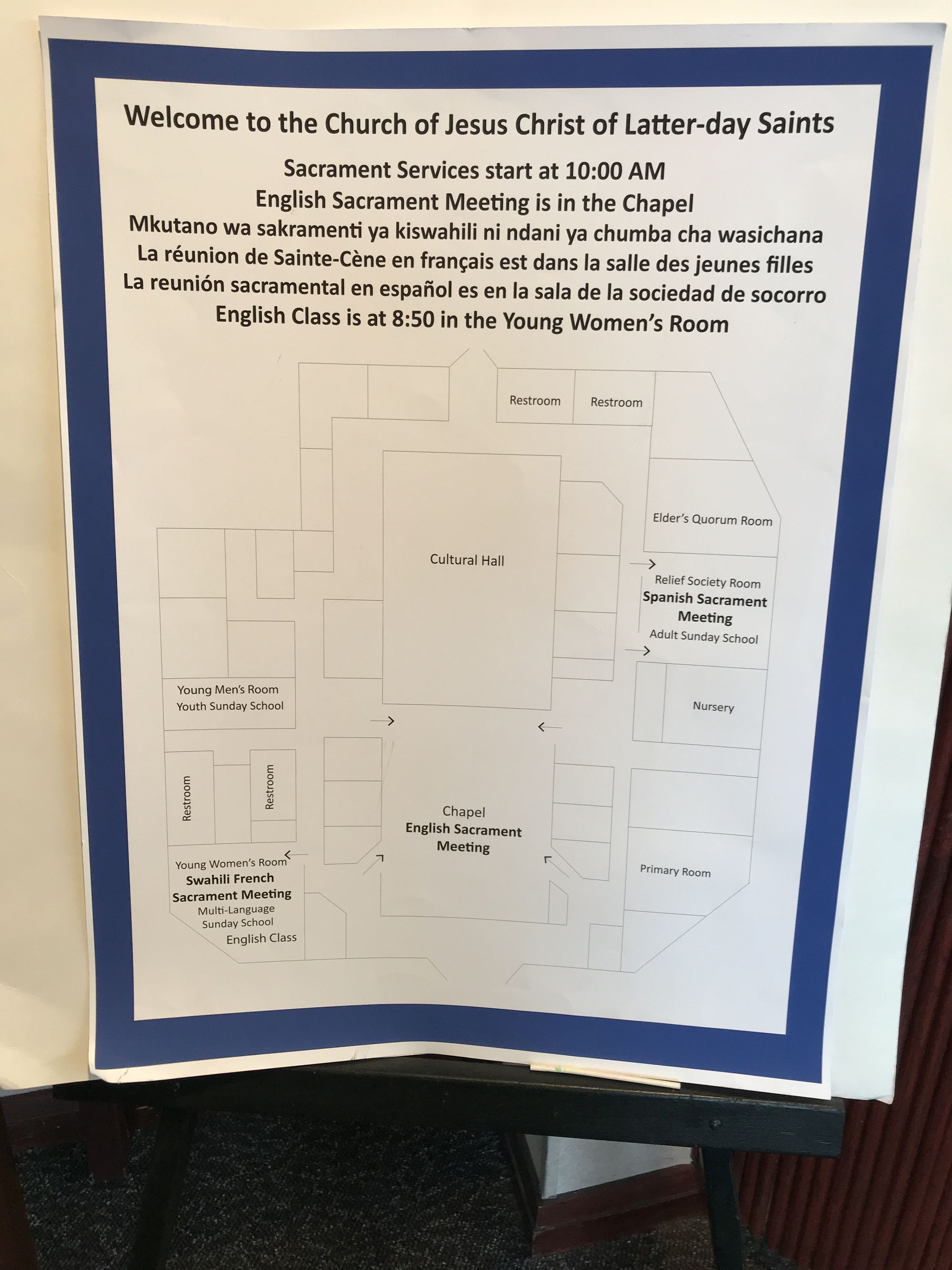
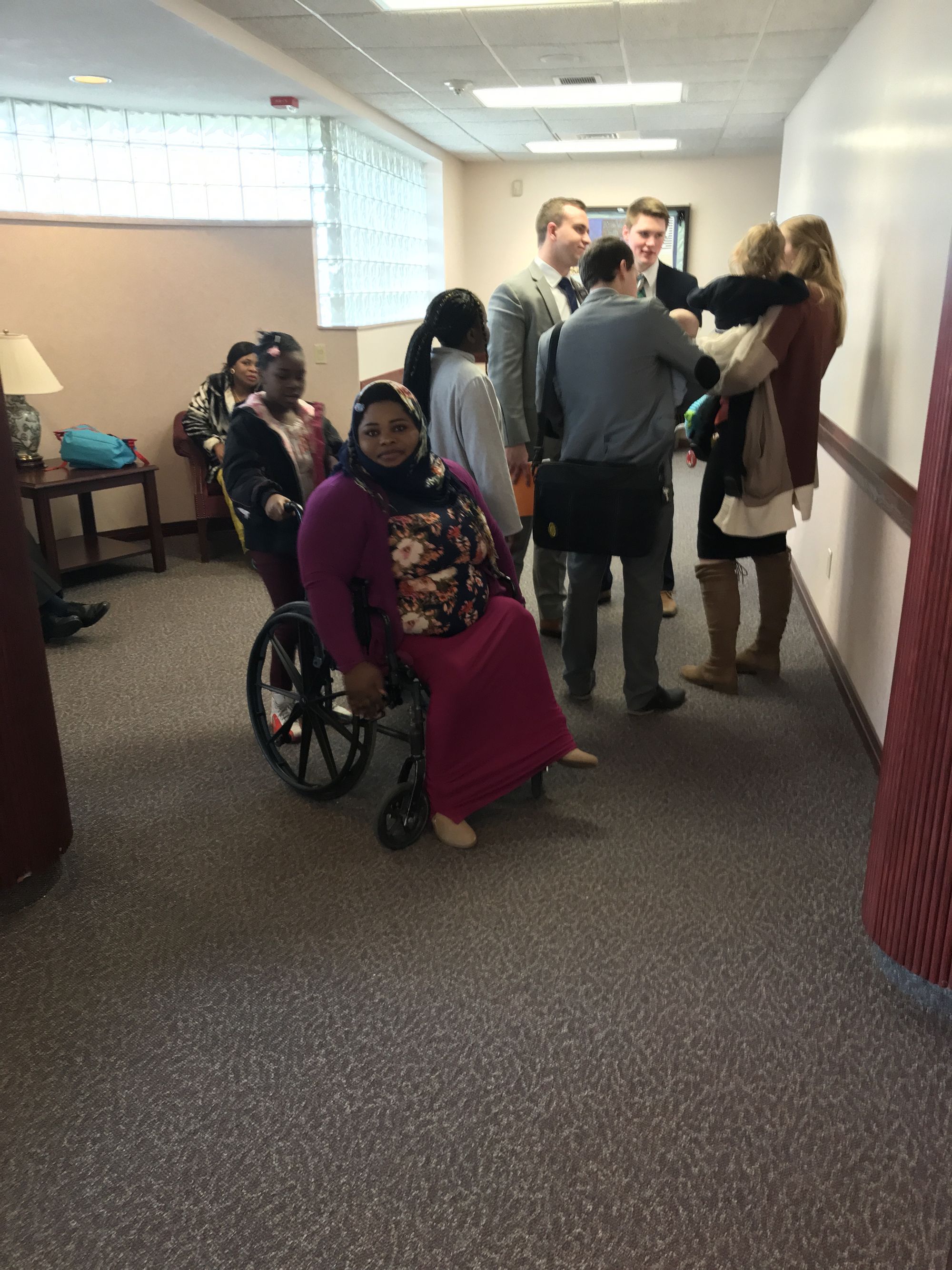
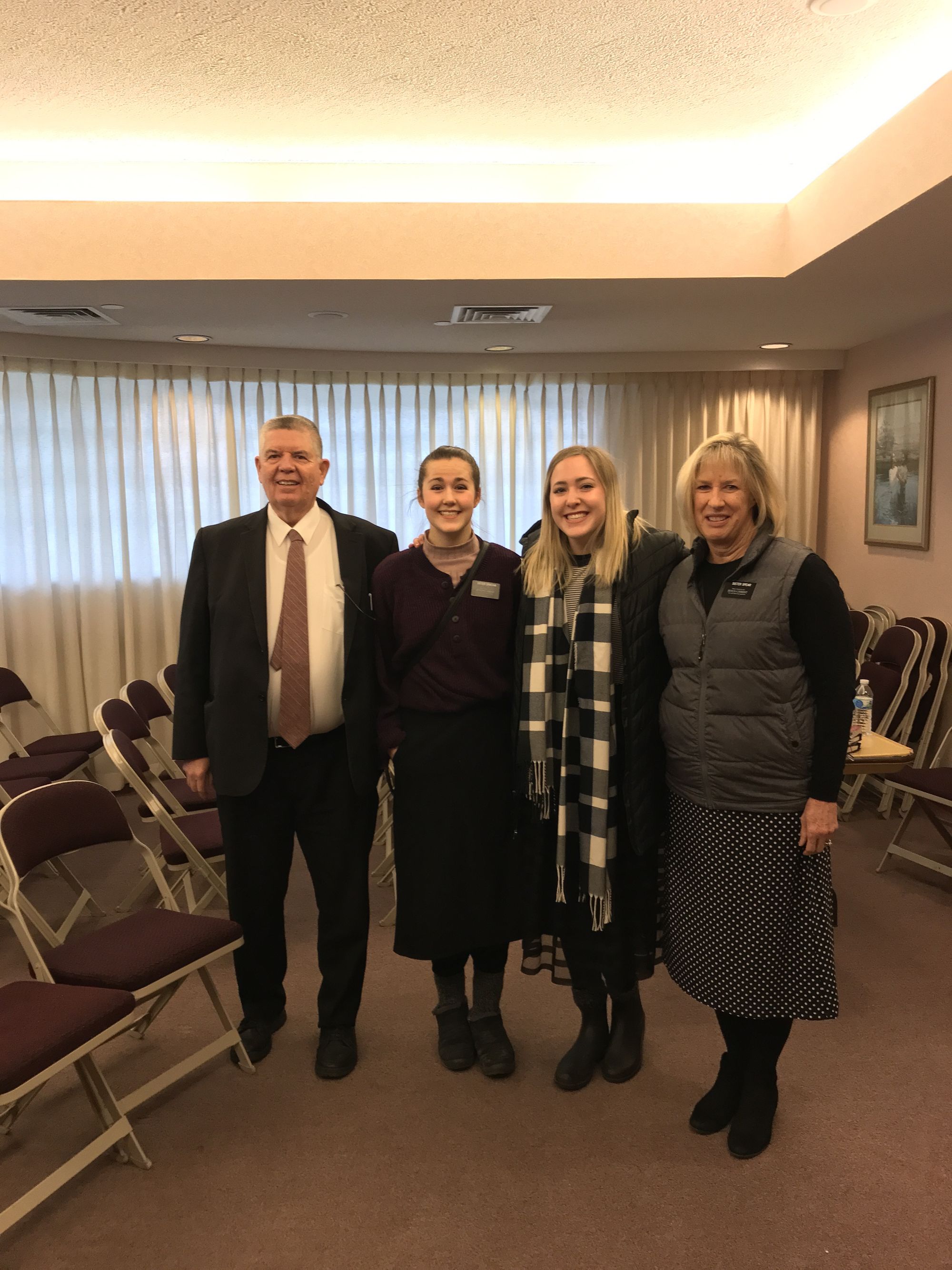
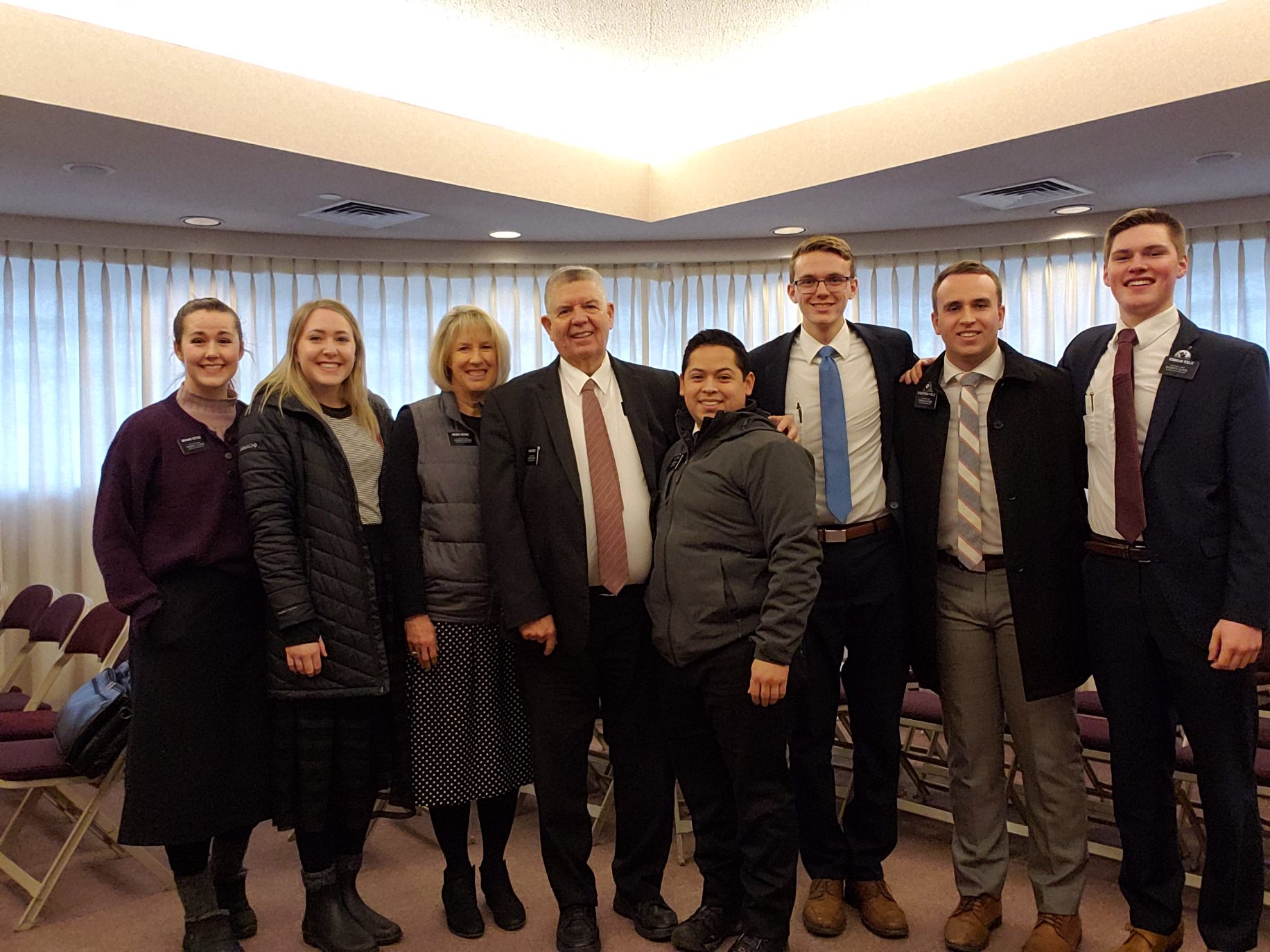
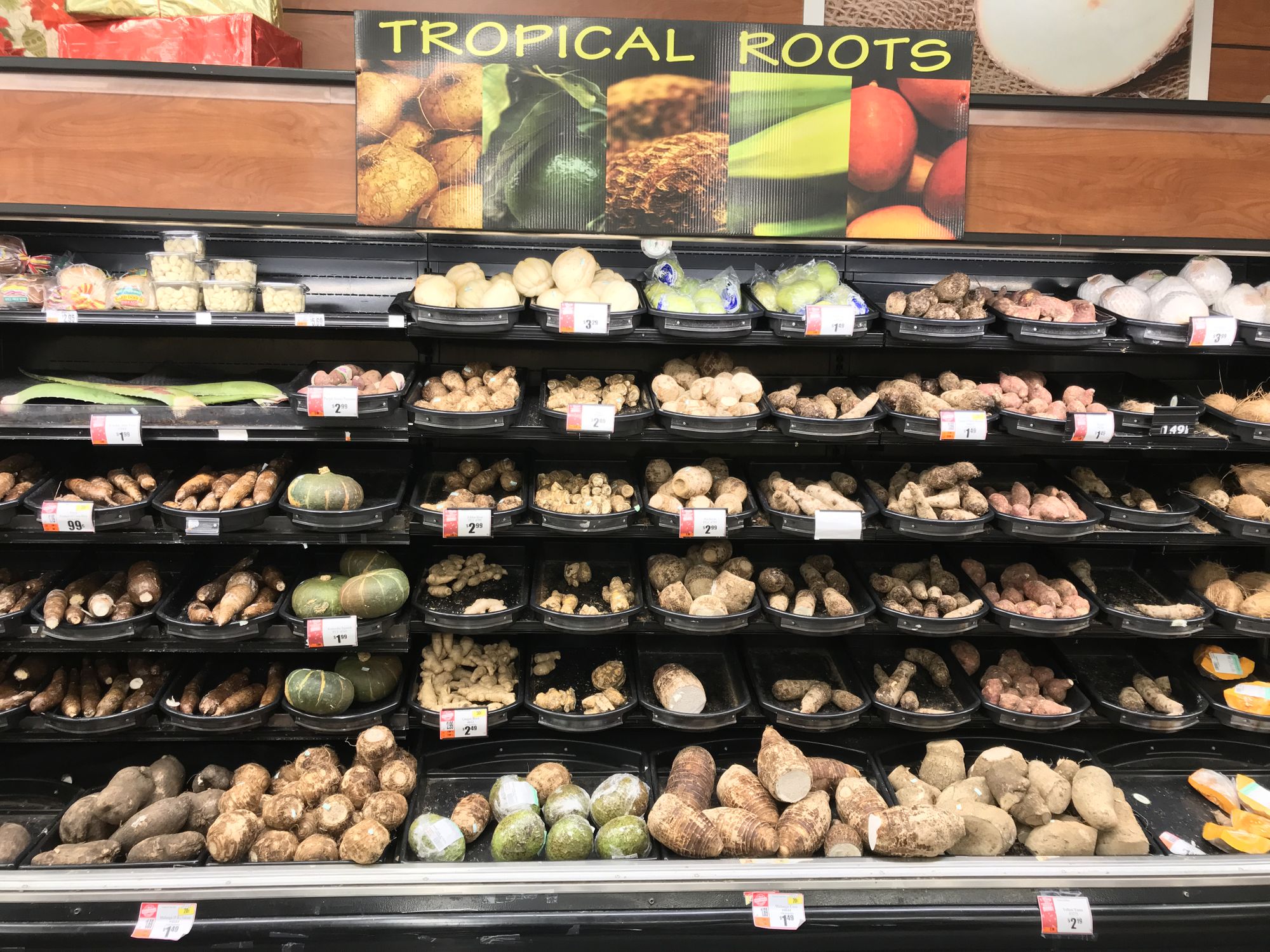

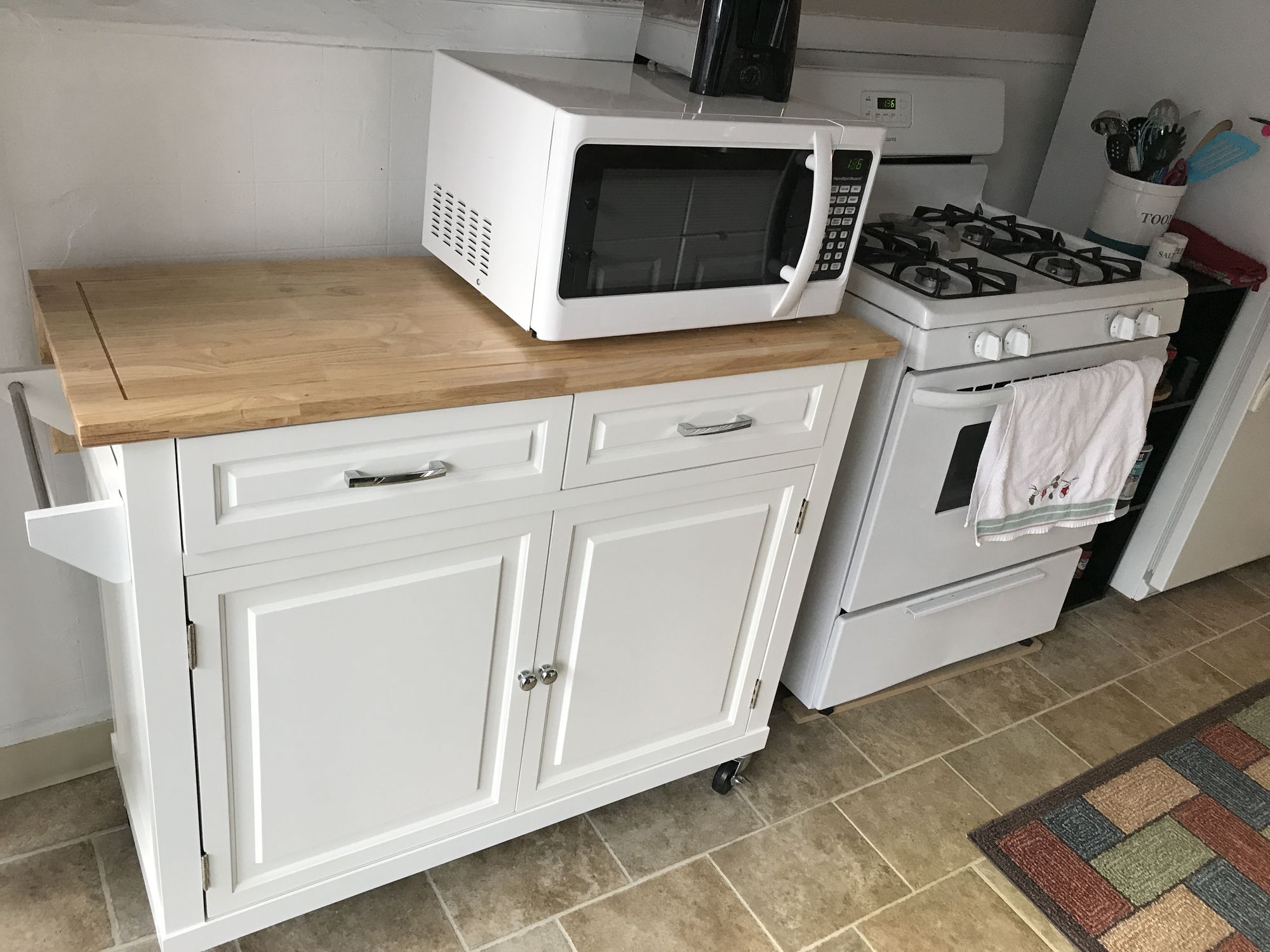
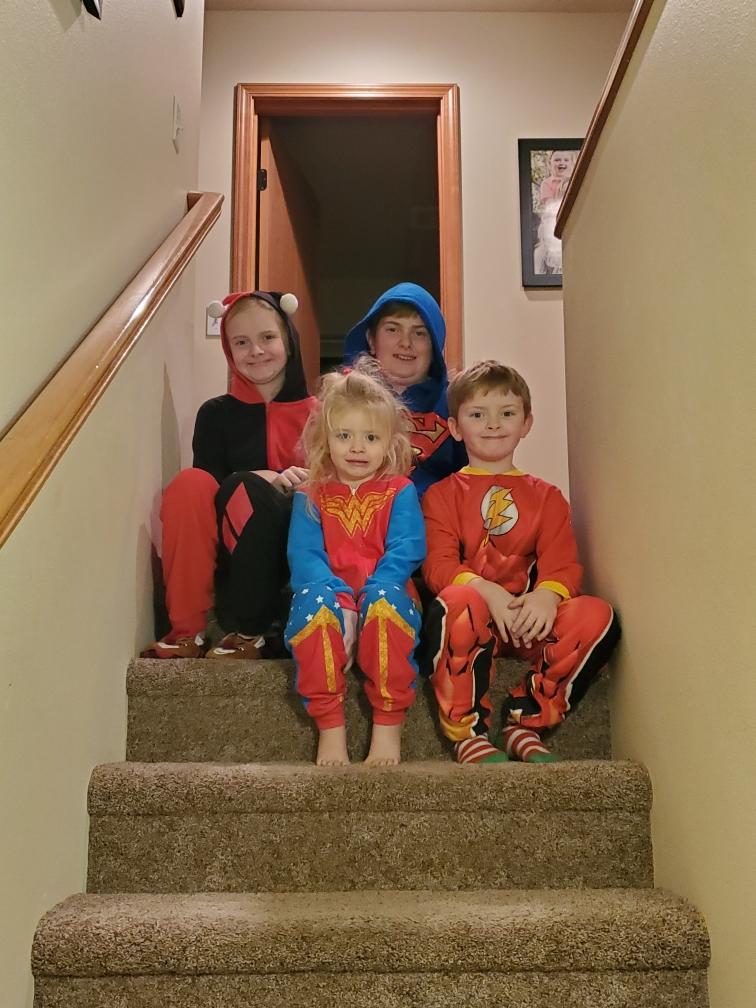
Another busy week in our NEW Paradise. Non-pictured activities:
On last Sunday we met with Bishop Desrosiers, his counselor, Taylor and Elder Sonnefeld. We discussed a plan to create a Swahili Branch in the next several months.
Met with Bishop Desrosiers and Kiza who will work with the Swahili Group Leader, Amos, to start the process of translating Handbook 2 into Swahili. Kiza speaks Swahili, French and English. (Amos speaks Swahili and French. I met with Amos a couple of days later at his house.) We are taking the French Handbook 2 and then also the Google Translate computer translated version of French to Swahili and the English version of the Handbook and trying to complete a Swahili version. Besides ending up with the Swahili translation, we will spend time teaching leadership principles, first to Kiza and Amos. Then we will expand our teaching to include other members who are growing in the gospel and being prepared to be future leaders in the Swahili Branch they are hoping to organize soon.
Missionary Coordination Meeting Wednesday night. Reviewed lots of things that are going on and how we can help.
Met with Igor Marques, the Ward Mission Leader, in his office to review Ward Members that we should reach out to – and he gave us a Ward List to help us know where everyone lives.
Met with David & Maria to help them find family names to take to the Temple. Maria was recently baptized.
On Friday we met with Amanda who hasn’t attended church in a while but has decided to be more involved. Amanda called the Sister Missionaries, but Amanda doesn’t live in their area. So, Elders McSpadden and McOmber asked us to visit with them. We also met with Amanda and two of her children on Saturday to teach them about the Restoration. And then they came to church on Sunday – it was awesome.
We cleaned the building again on Saturday – we gave rides so the Swahili members could come help too.
We visited several families this week: Didas & Regina, The Amuri Family, Amos & Fatuma, Maria’s son, Ney, Franco, Desire “Siden”’s brothers, Zachery & Stephanie and Iyana. And we tried to find a bunch more, we’ll keep trying! (And of course we took lots of Karen’s yummy treats with us as we visited.)
We made 3 trips to the church giving rides. (That took about 1 ½ hours.)
Things are hopping in this part of the kingdom - we feel so blessed to be here!